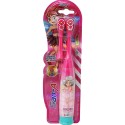- Phloem fibres :
- Also known as bast fibres.
- Made of sclerenchymatous cells.
- Absent in primary phloem but present in secondary phloem.
- Much elongated, unbranched and have pointed, needle like apices.
- Cell wall is quite thick.
- On maturity loose their protoplasm and become dead.
- Phloem fibres of jute, flax and hemp are used commercially.
- The first formed primary phloem consists of narrow sieve tubes and referred as protophloem.
- The later formed phloem has bigger sieve tubes and is referred to as metaphloem.
THE TISSUE SYSTEM :
- On the basis of their structure and location there are three types of tissue systems.
- Epidermal tissue system.
- Ground or fundamental tissue system.
- Vascular or conducting tissue system.
Epidermal tissue system :
- Forms the outermost covering of the whole plant body and comprises:
- Epidermal cells.
- Stomata
- Epidermal appendages like trichomes and hairs.
- Epidermis consists of single layer parenchymatous cells.
- Cells are elongated, compactly arranged, which form continuous layer.
- Epidermis is usually single layered.
- Outside the epidermis covered with waxy thick layer called cuticle.
- Cuticle absent in epidermis of root.
- Stomata are the structure present in the epidermis of leaf.
- Stomata regulate the process of transpiration and gaseous exchange.
Stomata :
- Each stoma composed of two bean shaped cell called guard cells.
- In grasses the guard cells are dumb-bell shaped.
- Outer wall of guard cell is thin and inner wall is thick.
- Guard cell possesses chloroplast and regulates the opening and closing of stomata.
- Epidermal cells in the vicinity of guard cell called subsidiary cells.
- Stomatal aperture, guard cells and subsidiary cells together called stomatal apparatus.
- The root hairs are unicellular elongations of the epidermal cells and help absorb water and mineral from the soil.
Trichomes :
- On stem the epidermal hairs are called trichomes.
- Trichomes are usually multicellular.
- May be branched or unbranched and soft or stiff.
- Sometimes secretory.
- Trichomes help in preventing water loss due to transpiration.
The ground tissue system :
- All the tissues except epidermis and vascular bundles constitute the ground tissue.
- It consists of simple tissues such as parenchyma, collenchyma, Sclerenchyma.
- Parenchymatous cells are present in cortex, pericycle, pith and medullary rays.
- In leaves, the ground tissue consists of thin-walled chloroplast containing cells called mesophyll.
The vascular tissue system :
- Vascular system consists of complex tissues – xylem and phloem.
- Xylem and phloem together constitute the vascular bundle.
- In dicot presence of cambium between xylem and phloem called open vascular bundle.
- Vascular bundle without cambium is said to be closed vascular bundle.
- Radial vascular bundle: xylem and phloem arranged alternate manner on the different radii.
- Conjoint vascular bundle: xylem and phloem are situated at the same radius of vascular bundle.
ANATOMY OF DICORYLEDONOUS AND MONOCOTYLEDONOUS PLANTS :-
Dicotyledonous Root :
- The outermost layer is epidermis.
- Presence of unicellular root hairs in epidermis.
- The cortex constitutes many layer thin-walled parenchyma cells with intercellular spaces.
- The innermost layer of cortex is endodermis.
- Endodermis consists of single layered barrel-shaped cells without intercellular spaces.
- Presence of casparian strip in the endodermis.
- Next to endodermis there is few layer parenchymatous cells form pericycle.
- Initiation of lateral root and vascular cambium during secondary growth takes place from the cells of pericycle.
- The parenchymatous cells present in-between xylem and phloem is called conjuctive tissue.
- The number of xylem and phloem bundle is three or four.
- All the tissues on the inner side of endodermis such as pericycle, vascular bundles and pith constitute the stele.
CBSE Biology (Chapter Wise) Class XI ( By Mr. Hare Krushna Giri )
Email Id : [email protected]
Biology - Mr. Hare Krushna Giri


